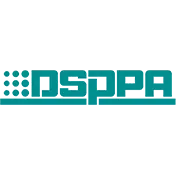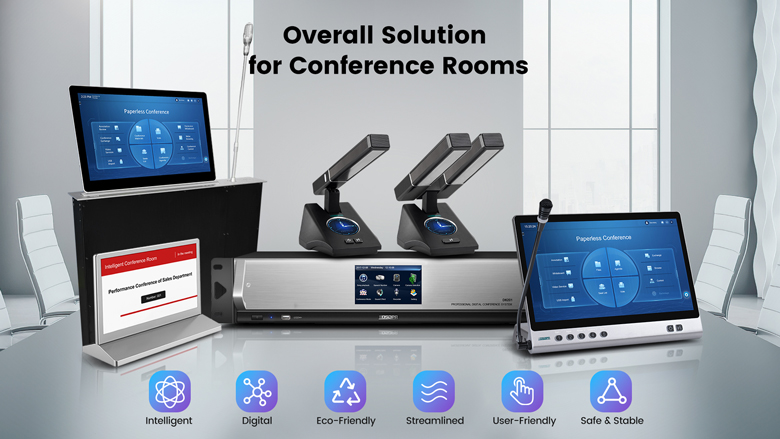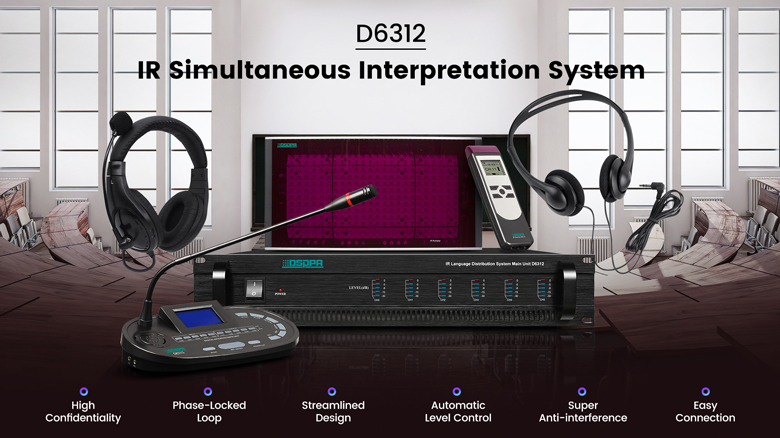
In modern enterprises, conference room meeting systems play an indispensable role. Whether it's a business meeting, product presentation, or academic seminar, the sound system can effectively enhance the clarity and efficiency of information transmission. With the advancement of technology, the functions and installation methods of digital conference room meeting systems are also continuously evolving. Today, we will delve into the core functions of this system and its installation methods.

The main functions of the digital conference room meeting system include speech discussion, electronic resolution, simultaneous interpretation, and identity sign-in. The completeness of these functions directly affects the efficiency and quality of the meeting. Specifically, the conference room meeting system generally includes the following functional aspects:
Speech System: Supports attendees in speaking and allows for simultaneous speech by multiple participants. This feature ensures that all participants' voices are conveyed clearly, avoiding information loss.
Electronic Resolution: This system can realize real-time voting and resolution functions, making the decision-making process in meetings more efficient and transparent. Attendees can vote through electronic ballot boxes and receive results promptly, avoiding the cumbersome nature of traditional paper voting.

Simultaneous Interpretation: In multilingual meetings, the simultaneous interpretation function is particularly important. The system can translate the speaker's language in real-time into the language required by other participants, eliminating language barriers.
Identity Management: The sign-in system can accurately record the attendance of participants, ensuring the organization and regulation of the meeting.
Internal Communication: The system also supports internal video and voice communication, making communication among meeting participants smoother.
Through the integration of these functions, the digital conference room meeting system can effectively enhance the organizational efficiency of meetings and the quality of information transmission.

Installing a digital conference room meeting system requires considering multiple aspects to ensure the smooth operation of the system and user convenience. The main installation methods are as follows:
Desktop Installation: This installation method is typically suitable for small meeting rooms and involves movable desktop equipment (desktop all-in-one machines). Users can flexibly adjust the position as needed to suit different meeting requirements.
Embedded Installation: The embedded installation method is suitable for large conference rooms. It combines the equipment with the desktop surface, forming a tidy appearance. The functional modules of the equipment can be either integrated design or a combination of individual functional modules. This method saves space and enhances the aesthetics of the conference room.
Semi-Embedded Installation: This installation method combines the advantages of desktop and embedded styles, with some equipment fixed on the desktop and others embedded into it. It is suitable for conference rooms with special spatial requirements.
Regardless of the installation method chosen, the selection of the conference room meeting system's microphones is also crucial. Options include gooseneck retractable microphones, paging microphones, retractable handheld microphones, or built-in microphones. Suitable microphones can ensure the clear transmission of the speaker's voice, making the meeting more efficient.